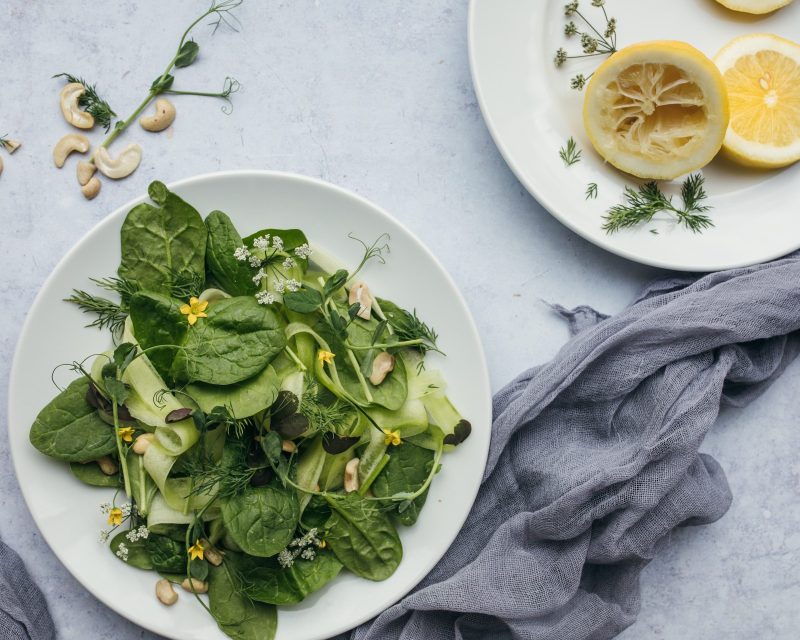
If you’re anything like us, you love the hustle and bustle of daily life while out camping. One of the most exciting aspects of being out in nature is the the opportunity to forage for edible plants that grow abundantly in your area. Not only does this add a touch of freshness to your camp food, but it gives you a new appreciation for nature.
In this article, we’ll highlight some edible plants that grow wild around much of the United States. But make sure that you exercise caution and identify these plants properly! It’s always a good idea to consult an expert just to make sure.

Dandelion leaves
Most see dandelion leaves as a weed, but did you know that they are edible? Dandelion leaves are rich in vitamins A, C, and K, as well as iron and calcium. Their slightly bitter taste adds a unique dimension to salads, which can be a great addition to your camping menu. When foraging for dandelions, look for the characteristic serrated leaves and familiar yellow flowers. Be sure to pick them away from areas that have been sprayed with pesticides.

Wild garlic
Wild garlic, also known as field garlic or crow garlic, is a member of the allium family and shares similarities with chives, onions, and of course garlic. The entire plant, from the bulb to the leaves, is edible, and it has a mild garlic flavor. It can be used to season soups, stews, and grilled meats, which means that it’s the perfect companion for your campfire cooking. You can find wild garlic in meadows and open woods, but make sure that you’re not mistaking it for its toxic look-alike, death camas. Death camas has broader, flatter leaves, and lacks the waxy texture of wild garlic.

Chives
Chives are a popular herb in culinary dishes, and the good news is that they can also be found growing wild in various parts of the United States. Their slender green stalks have a mild onion flavor that complements a wide range of dishes, including omelets, salads, and pasta. They have a pretty purple flower that looks like a pom-pom, so they are easily recognizable. Chives prefer moist soil and are often found near streams or in damp meadows.

Blackberries
If you happen to be camping near a thicket or forested area, keep an eye out for wild blackberries. These delicious fruits are not only a delightful snack but can also be used to enhance desserts, breakfasts, and even savory dishes. Try stuffing them into a cored apple, wrapping it all in tinfoil, and heat it up by the campfire.Blackberry leaves can also be used to make a flavorful tea.

Wild strawberries
Imagine stumbling upon a patch of wild strawberries while hiking or camping. These small, sweet berries are a delightful treat and can be used to elevate the taste of desserts, breakfasts, and beverages. Wild strawberries often grow in woodland edges, meadows, and even rocky slopes. They are easily identifiable by their characteristic white flowers and small, heart-shaped leaves. The berries are about the size of your fingernail, but you will definitely be able to taste the sunshine.

Wild mint
If you’re looking to add a refreshing twist to your camping cuisine, wild mint is the way to go. This aromatic herb can be found near streams, in damp soil, or along riverbanks. Its leaves can be used to flavor teas, cocktails, salads, and meat dishes. Wild mint is relatively easy to identify by its square stems, opposite leaves, and distinct minty aroma. Just don’t mistake it for Pennyroyal, which is toxic.

Purslane
Purslane is an underrated wild edible that is a rich source of omega-3 fatty acids, antioxidants, and essential vitamins. Its succulent leaves have a slightly tangy flavor, making them a refreshing addition to salads and sandwiches. Purslane is highly adaptable and can be found in various environments, including gardens, lawns, and open fields.
Remember to be responsible when foraging for purslane and any other wild edibles on this list. Only harvest from areas that you can positively identify and that have not been sprayed with pesticides or herbicides, and wash your bounty thoroughly in running water before eating. Always leave enough plants behind to ensure their continued growth and support the local ecosystem.
By following these safety guidelines and being responsible while foraging, you can enjoy the benefits of wild edibles while minimizing risks and protecting both yourself and the environment. If in doubt, it’s always best to consult with experienced foragers or experts in the field of wild edible plants to enhance your knowledge and ensure a safe foraging experience.



